Bonded Rigid Pavement - A New Edge Concrete Pavement
The bonded rigid pavement is environmentally friendly as well as a cost-effective technology that needs to be promoted by states and highway agencies.
Atasi Das, Assistant Vice President, G R Infraprojects Ltd.
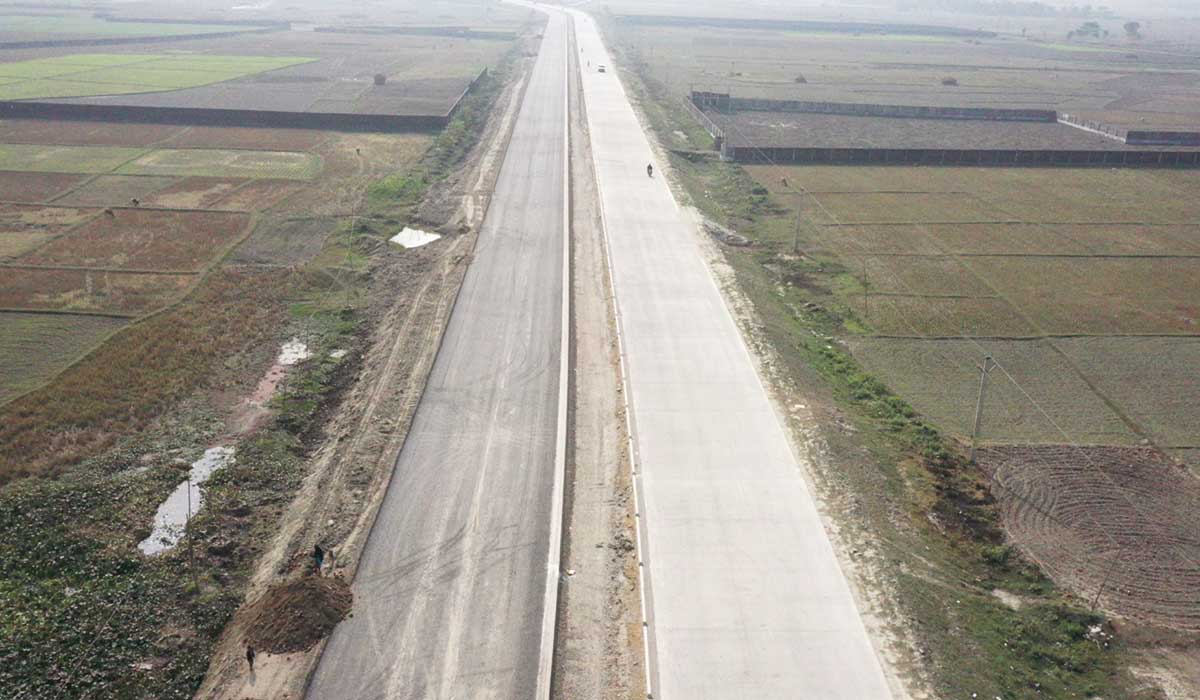
The exponential growth of the highway infrastructure in the past two decades has increased demand for long-lasting, durable pavements. Rigid pavements are suitable for heavily trafficked areas and are found to be performing satisfactorily with minimum maintenance, however, their initial cost of construction may tend to be very high.
The typical Concrete Pavement comprises of Pavement Quality Concrete (PQC) (generally 300mm thick) with Dry Lean Concrete (DLC) (150mm thick) & Granular Sub-base (150mm thick). The quantity of material consumption is quite high and if reduced, can save a lot of energy and natural resources. As per the studies conducted, the cement industry is one of the highest consumers of fossil fuel energy. Cement manufacturing also emits greenhouse gases. Being a developing country and to conserve natural resources, it is necessary to find technologies other than the conventional. For instance, the Bonded Rigid Pavement is not only feasible financially but also saves natural resources.
The concept of BRP is present in our codal provisions since long, but due to the lack of proper design and construction methodology, the technology has not gained momentum yet. With the use of BRP technology, there is around 10% saving of natural resources and about 15% financial savings, without compromising the structural integrity. The design concept of BRP in comparison with CRP is summarized in Figure 1:
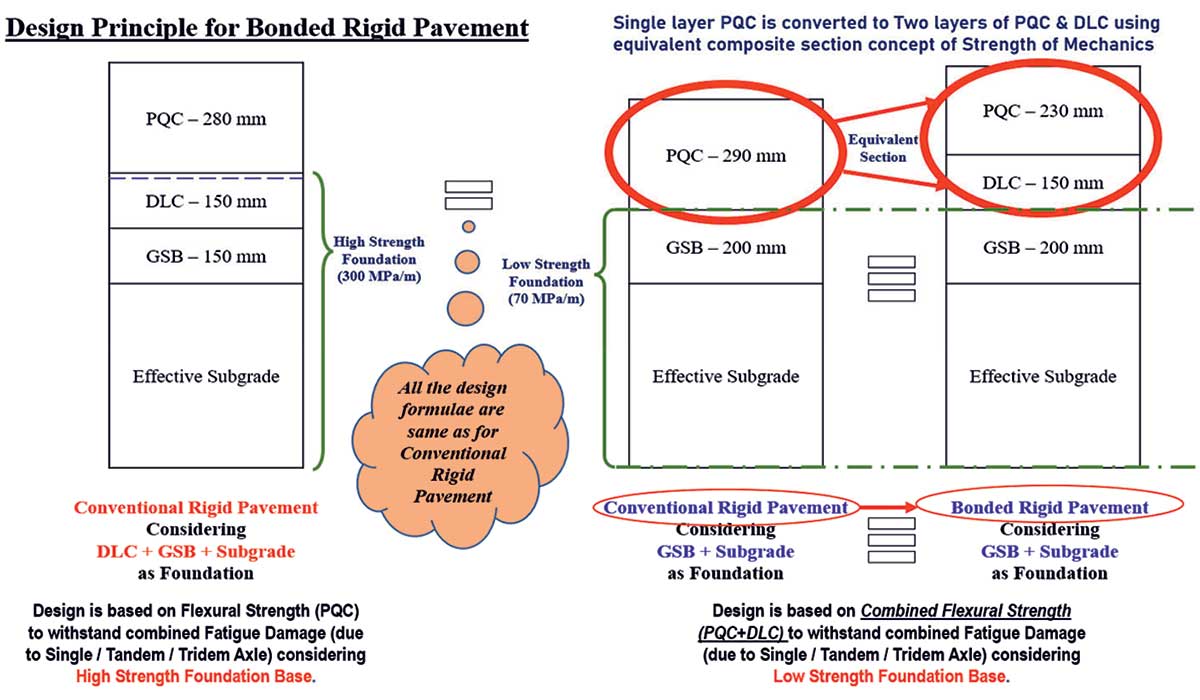 Figure 1: Comparison of Design Principle of CRP and BRP
Figure 1: Comparison of Design Principle of CRP and BRP
The concept may easily be understood by the fact that the design of CRP is based on the high strength foundation (DLC, GSB and Subgrade are considered as foundation) while in the case of BRP, low strength foundation (GSB & subgrade) is considered. The design of Bonded Rigid Pavement shall be done according to section 6.7 of IRC 58-2015. It is mandatory to provide false joints in the DLC at the same location where the joints in the PQC are going to be saw cut, i.e., mapping of joints in DLC & Bonded PQC to be done.
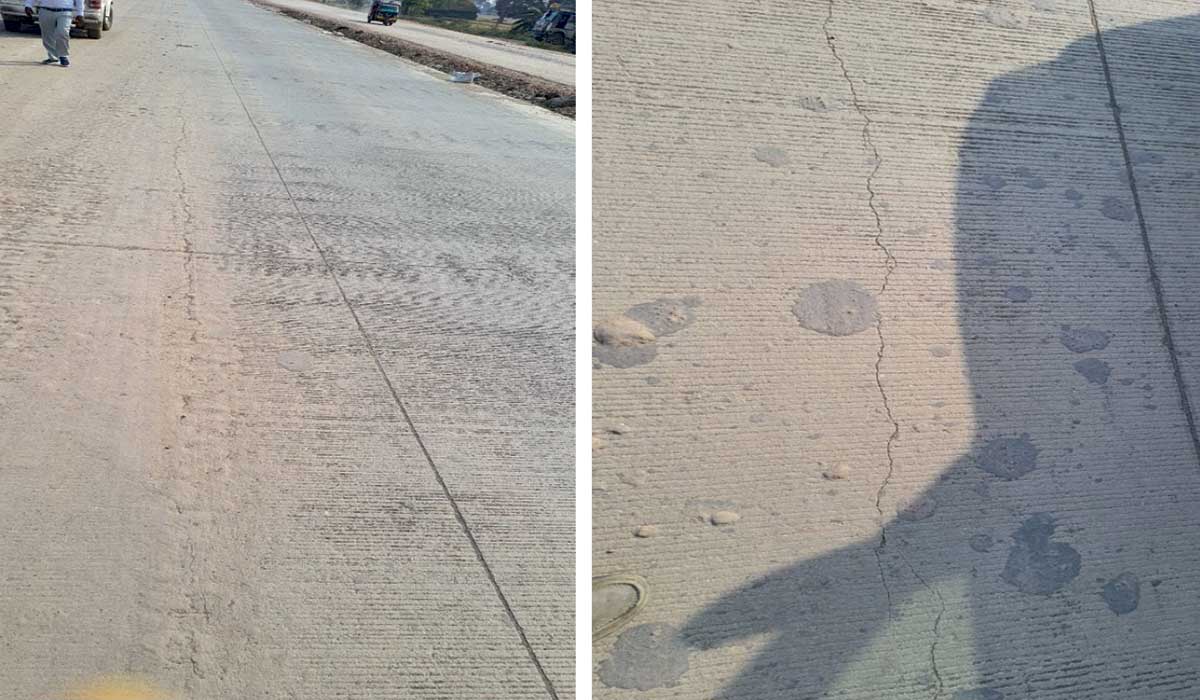 Figure 2
Figure 2
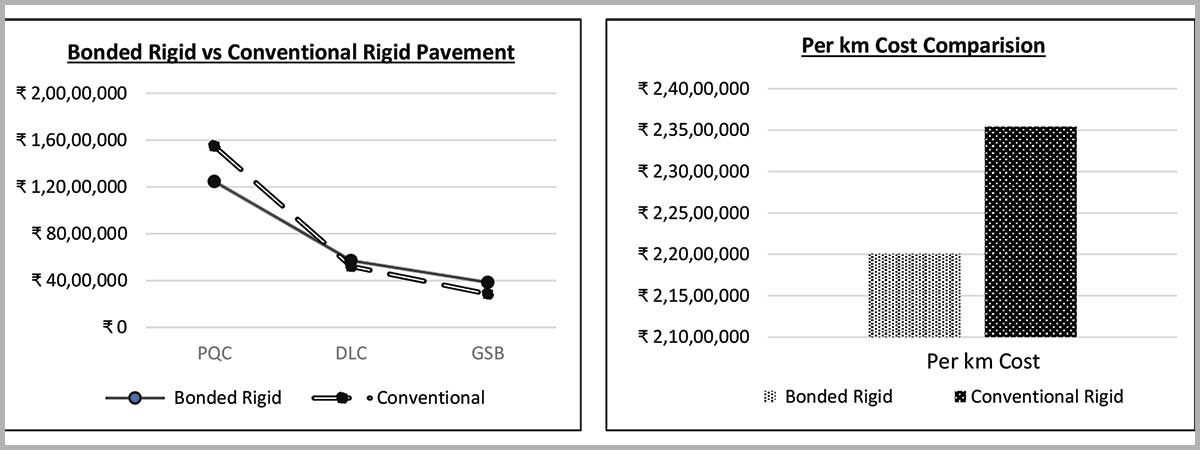 Figure 3: Cost Comparison of BRP and CRP
Figure 3: Cost Comparison of BRP and CRP
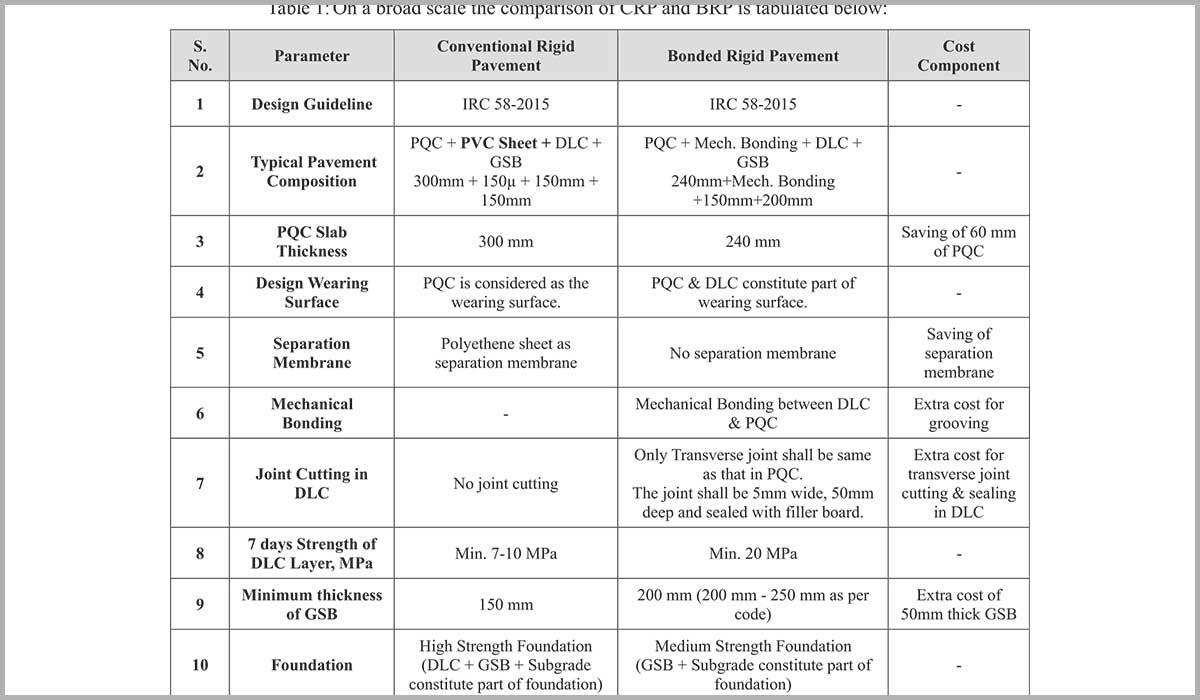
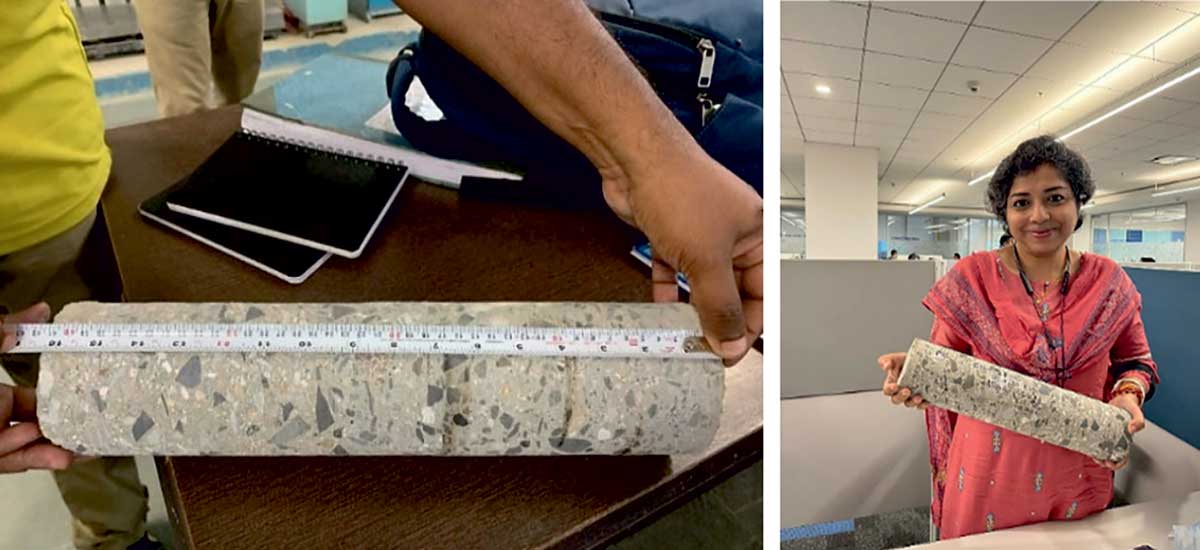 Photo: View of Extracted Core of Bonded Rigid Pavement
Photo: View of Extracted Core of Bonded Rigid Pavement
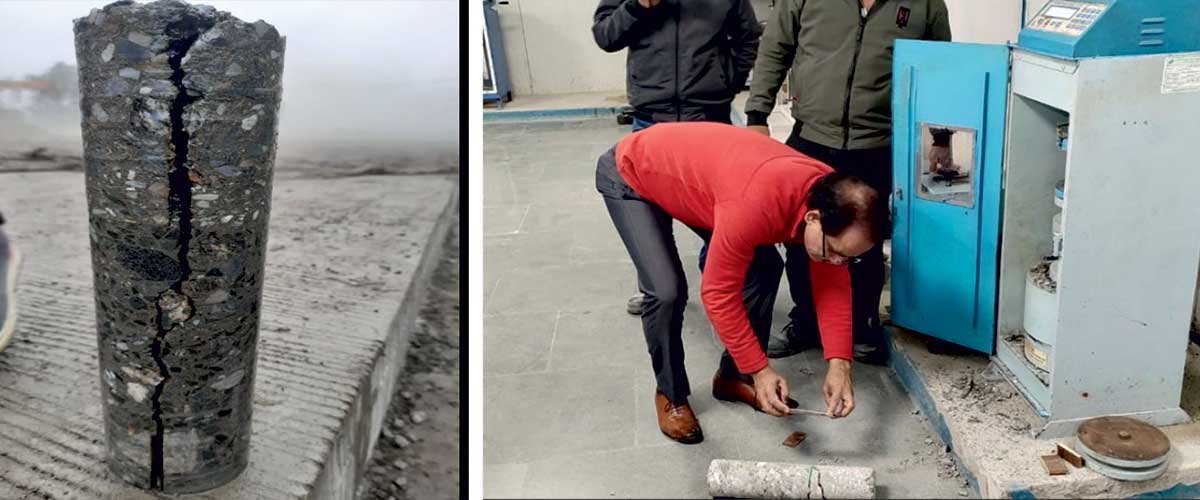 Photo: Testing of Extracted Cores from Bonded Rigid Pavement
Photo: Testing of Extracted Cores from Bonded Rigid Pavement
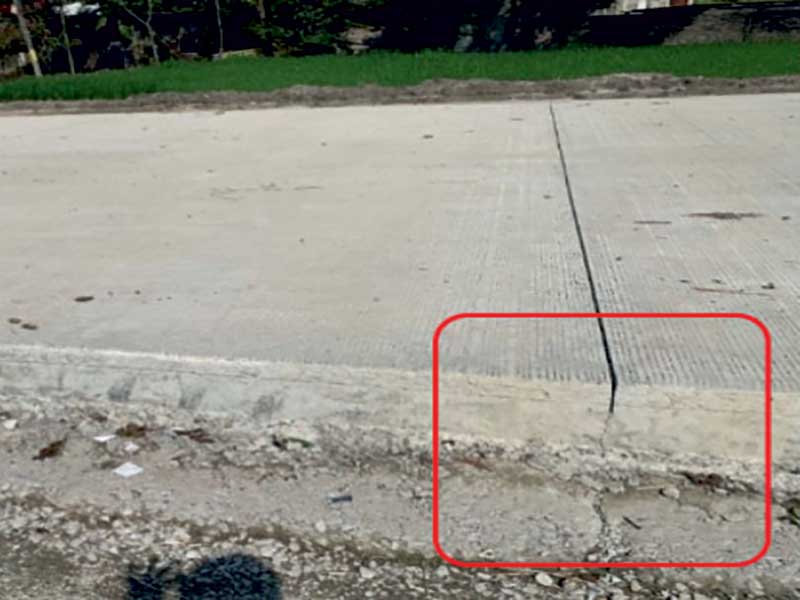 Photo: DLC and PQC Transverse Joint Overlapping
The bonded rigid pavement is an environment-friendly and a cost-effective technology that needs to be promoted by both state and highway agencies. The technology shall be promoted by all stakeholders such as Consultants, Concessionaire/ Contractors, and Clients.
Photo: DLC and PQC Transverse Joint Overlapping
The bonded rigid pavement is an environment-friendly and a cost-effective technology that needs to be promoted by both state and highway agencies. The technology shall be promoted by all stakeholders such as Consultants, Concessionaire/ Contractors, and Clients.
Acknowledgement: We thank GRIL Management for successful implementation of the unused technology and to Yash Pandey and Rishabh Maurya of GRIL for their contribution to this article.
Atasi Das, Assistant Vice President, G R Infraprojects Ltd.

The exponential growth of the highway infrastructure in the past two decades has increased demand for long-lasting, durable pavements. Rigid pavements are suitable for heavily trafficked areas and are found to be performing satisfactorily with minimum maintenance, however, their initial cost of construction may tend to be very high.
The typical Concrete Pavement comprises of Pavement Quality Concrete (PQC) (generally 300mm thick) with Dry Lean Concrete (DLC) (150mm thick) & Granular Sub-base (150mm thick). The quantity of material consumption is quite high and if reduced, can save a lot of energy and natural resources. As per the studies conducted, the cement industry is one of the highest consumers of fossil fuel energy. Cement manufacturing also emits greenhouse gases. Being a developing country and to conserve natural resources, it is necessary to find technologies other than the conventional. For instance, the Bonded Rigid Pavement is not only feasible financially but also saves natural resources.
Bonded Rigid Pavement: Design Philosophy
The Bonded Rigid Pavement (BRP) is a type of pavement in which the PQC and DLC are bonded to each other by mechanical or chemical means, unlike in Conventional Rigid Pavement (CRP), where PQC and DLC are unbonded or differentiated by a separation membrane (polythene sheet). The concept of Bonded Rigid Pavement is similar to two lifts concrete pavements that can be traced to Bellefontaine, United States, 1891 where PCC of higher grade (structural layer) with PCC of lower grade (durable course) was used as a composite. The action and maintenance cost for the composite rigid section was found to be minimal through a span of 50 years. In Europe and United States, having two lift paving concrete pavements (each with different properties) also helps in reducing noise, increasing skid resistance, and lowering costs.The concept of BRP is present in our codal provisions since long, but due to the lack of proper design and construction methodology, the technology has not gained momentum yet. With the use of BRP technology, there is around 10% saving of natural resources and about 15% financial savings, without compromising the structural integrity. The design concept of BRP in comparison with CRP is summarized in Figure 1:
 Figure 1: Comparison of Design Principle of CRP and BRP
Figure 1: Comparison of Design Principle of CRP and BRPThe concept may easily be understood by the fact that the design of CRP is based on the high strength foundation (DLC, GSB and Subgrade are considered as foundation) while in the case of BRP, low strength foundation (GSB & subgrade) is considered. The design of Bonded Rigid Pavement shall be done according to section 6.7 of IRC 58-2015. It is mandatory to provide false joints in the DLC at the same location where the joints in the PQC are going to be saw cut, i.e., mapping of joints in DLC & Bonded PQC to be done.
 Figure 2
Figure 2- The joint in DLC shall be initial saw cut (3-5 mm wide) and 1/3rd deep. The joint shall be sealed using EPE Foam Rod / Emulsion RS1 / Compressible Filler Board etc.
- Strict adherence to the mapping of joints shall be followed in DLC and thereafter in Bonded PQC.
 Figure 3: Cost Comparison of BRP and CRP
Figure 3: Cost Comparison of BRP and CRPBRP- Construction Methodology
- Construction of Subgrade & Granular Sub-base (GSB) / Cement Treated Sub-base (CTSB): The subgrade and granular sub-base / cement treated sub-base shall be constructed in line with the provisions of MoRTH and IRC specifications and also the quality control test shall be as per their specifications.
- Construction of Dry Lean Concrete (DLC): The DLC shall be laid in accordance with the provisions of MoRTH & IRC specifications, however the minimum compressive strength for 7 days shall be 20 MPa (although as per IRC 58-2015 it is recommended only 10 MPa).
- Application of Bonding Treatment in DLC: Bonding between DLC and PQC shall be by mechanical means. Within 3 to 6 hours of laying of DLC, the surface of green DLC shall be roughened using steel wire brush. The depth of roughening shall be min. 3-5mm deep and 3 mm wide. Precaution shall be taken while roughening of DLC so that no aggregates are ravelled out.
- Joint Cutting & Sealing in DLC: After 7-day curing of DLC, transverse & longitudinal grooves of depth 1/3rd to 1/4th of the DLC thickness i.e., 50-75mm (for 150mm thick DLC) shall be saw cut, matching the joints to be provided in PQC layer. Saw cut grooves of width 3mm to 5mm to a depth of 50-75mm shall be made in DLC and filled with EPE Foam Rod / Emulsion RS1 / Compressible Filler Board etc. Transverse & longitudinal grooves of DLC shall be co-terminus (in same vertical plane) with those of the PQC slab to avoid random cracks in the pavement. The transverse joint cutting in DLC shall extend in its full width.
- Curing of DLC: As soon as the lean concrete surface is compacted, curing shall commence. Hessian shall be used and kept moist for 7 days by regular sprinkling of water from flexible pipe attached to a water tanker. Curing by chemical means or other methods shall be avoided as this shall create smoothening of DLC and restrict the effective bonding of DLC and PQC. No traffic shall ply over DLC as this may disturb the texturing done in DLC.
- Construction of Pavement Quality Concrete (PQC): The PQC shall be laid within 10 to 15 days after laying of DLC in accordance with the provisions of MoRTH & IRC specifications.
- Joint Cutting, Sealing, Texturing & Curing of PQC: The joint cutting in PQC shall be as per MoRTH & IRC specifications.

Factors Leading to Failure of BRP
- Error to align the PQC and DLC Joint Cutting: If the joints in DLC and PQC are not aligned, an inherent crack (longitudinal) will develop and progress through the PQC from the DLC at the point of mismatch, as shown in Figure 2.
- Cold Joint in Granular Sub-base (GSB): Mostly in a four-lane highway, the GSB is laid side by side i.e., left side and right side carriageway construction is done separately. Let us consider one side GSB construction (10m wide). Mostly the entire 10m GSB is not constructed in one go, it is constructed in half width first and then in second half width. Due to the engagement of construction equipment these days, a cold joint in GSB is inevitable and unavoidable. When the DLC is laid over the GSB, the impression of cold joint forms over DLC and finally transmitted to PQC, due to which, PQC gets cracked reflectively. So, it is better to create cold joint in GSB at the same location where we want to create joint in DLC and PQC, or else the GSB shall be laid in entire width in one go.
- Bonding Mechanism: There are two different types of bonding mechanisms available: Mechanical and Chemical. Mechanical bonding is quite effective and economic in comparison to chemical bonding. In case of chemical bonding there is a possibility that the layer may become a separate layer despite the bonding layer. Also, the availability of high strength chemicals is quite expensive. While in case of mechanical bonding, though it is economical, but it is necessary that the texturing done on DLC shall be min 3mm deep and 3mm wide, so that a proper mechanical key may be formed between DLC and PQC for their bonding.
- Bond Strength: Although not much literature is available worldwide about the bond strength between DLC and PQC in case of bonded rigid pavement. However, as per experience, it is necessary that the bond strength of DLC and PQC shall have min. 1.7MPa strength.
The DLC surface shall be made rough with wire brush within 3 to 6 hours of placement and a bonding agent of water and cement slurry may be applied over the surface before laying of PQC to ensure the proper bonding between the PQC and DLC in case of chemical bonding.
Quality control is a major concern in bonded rigid pavement and shall be strictly adhered to. No traffic is allowed to ply on DLC prior to laying PQC. PQC shall strictly be laid between 10-15 days of DLC construction.
 Photo: View of Extracted Core of Bonded Rigid Pavement
Photo: View of Extracted Core of Bonded Rigid PavementFinancial Analysis
As bonded rigid pavement requires additional joints in DLC, and an additional granular subbase thickness as provisioned in IRC 58-2015, the economics of this pavement also need to be addressed. A typical 5%-10% cost saving is being observed as compared to conventional rigid pavement. A comparative cost comparison between both pavement system has been represented in Fig. 3, and it can be seen the major cost component in both pavement system is PQC which can be reduced by a huge margin considering the bonded rigid pavement and even considering the extra amount for bonding and extra cutting in DLC. Photo: Testing of Extracted Cores from Bonded Rigid Pavement
Photo: Testing of Extracted Cores from Bonded Rigid Pavement Photo: DLC and PQC Transverse Joint Overlapping
Photo: DLC and PQC Transverse Joint OverlappingAcknowledgement: We thank GRIL Management for successful implementation of the unused technology and to Yash Pandey and Rishabh Maurya of GRIL for their contribution to this article.
NBM&CW October 2023



















